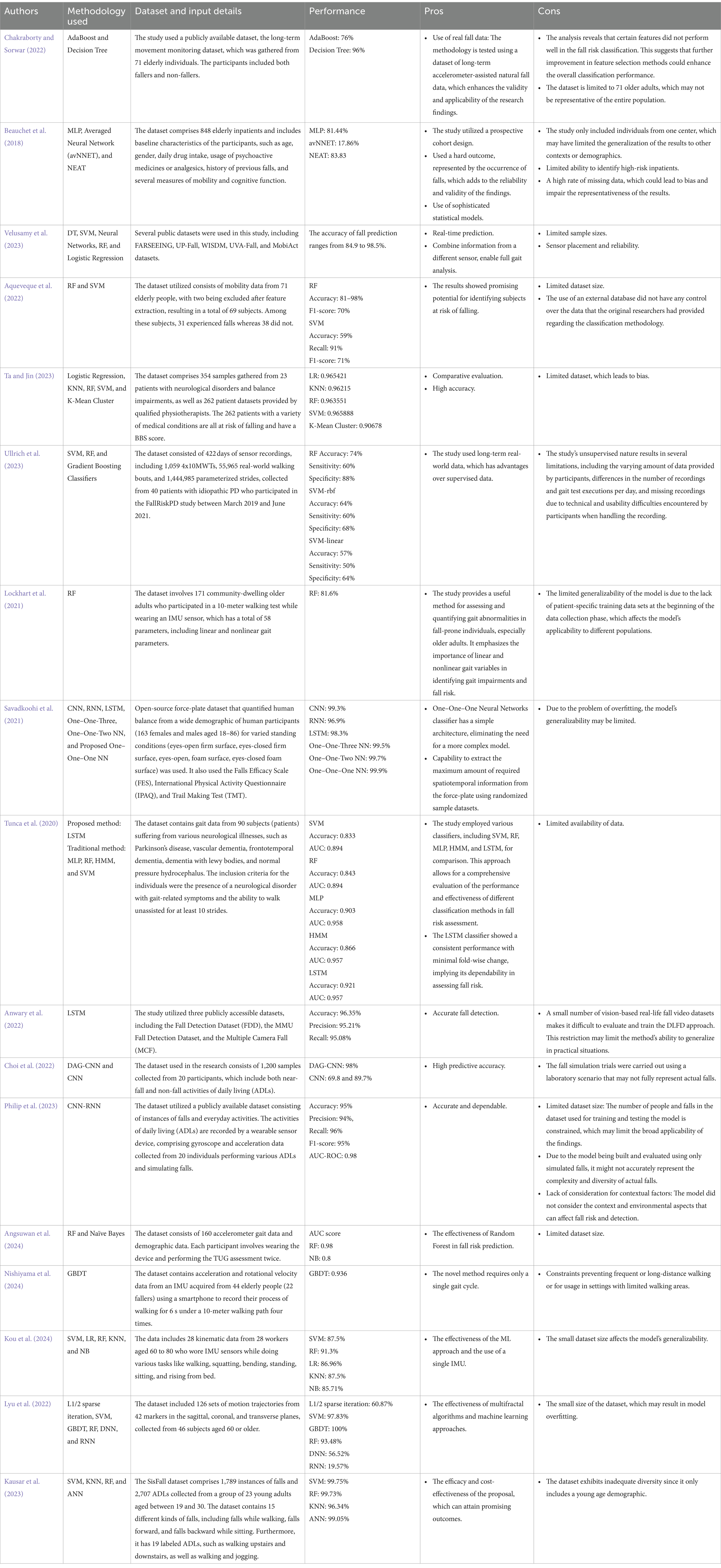New

Fall Risk Prediction Using Temporal Gait Features And Machine Learning Approaches

IntroductionFalls have been acknowledged as a major public health issue around the world. Early detection of fall risk is pivotal for preventive measures. Traditional clinical assessments, although reliable, are resource-intensive and may not always be feasible.MethodsThis study explores the efficacy of artificial intelligence (AI) in predicting fall risk, leveraging gait analysis through computer vision and machine learning techniques. Data was collected using the Timed Up and Go (TUG) test and JHFRAT assessment from MMU collaborators and augmented with a public dataset from Mendeley involving older adults. The study introduces a robust approach for extracting and analyzing gait features, such as stride time, step time, cadence, and stance time, to distinguish between fallers and non-fallers.ResultsTwo experimental setups were investigated: one considering separate gait features for each foot and another analyzing averaged features for both feet. Ultimately, the proposed solutions produce promising outcomes, greatly enhancing the model’s ability to achieve high levels of accuracy. In particular, the LightGBM demonstrates a superior accuracy of 96% in the prediction task.DiscussionThe findings demonstrate that simple machine learning models can successfully identify individuals at higher fall risk based on gait characteristics, with promising results that could potentially streamline fall risk assessment processes. However, several limitations were discovered throughout the experiment, including an insufficient dataset and data variation, limiting the model’s generalizability. These issues are raised for future work consideration. Overall, this research contributes to the growing body of knowledge on fall risk prediction and underscores the potential of AI in enhancing public health strategies through the early identification of at-risk individuals.


